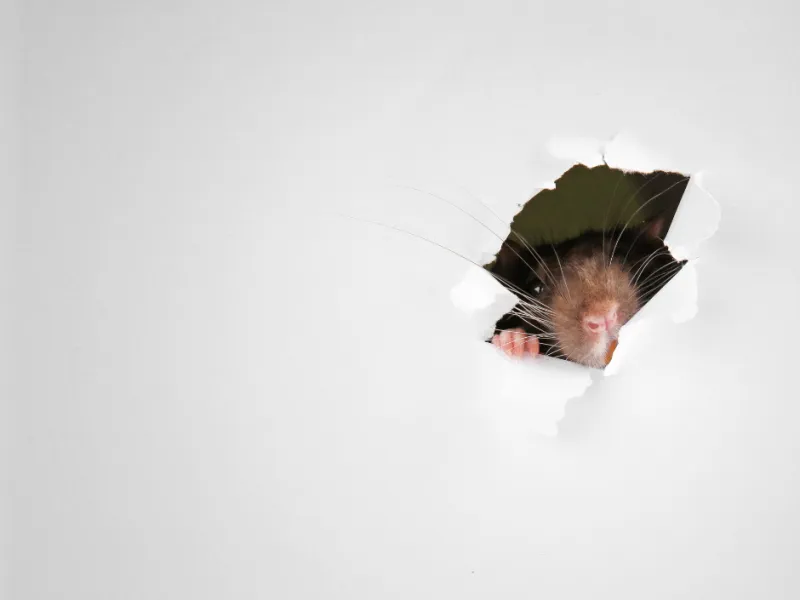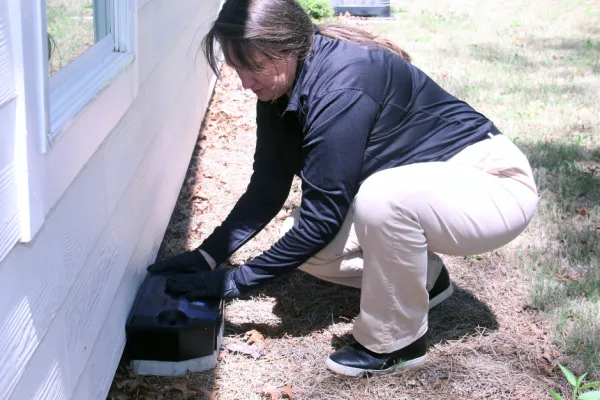Difference Between Mice and Rats

The Differences Between Mice and Rats
When it comes to unwanted pests in your home, mice and rats are two of the most common culprits—but they're not the same. While both rodents can cause damage and spread disease, there are clear differences in their size, habits, and behavior. Knowing whether you're dealing with mice or rats is the first step to choosing the right control methods. Below, we break down the key differences so you can identify which one may be invading your space.
1. Size - One of the easiest ways to tell mice and rats apart
Mice are much smaller—usually 2-4 inches long, not counting their tails.
Rats are larger, often 9-11 inches long, with thick bodies and long tails.
2. Tails - Noticable difference
Mice have long, thin, and slightly hairy tails.
Rats have thick, scaly tails that are almost as long as their bodies.
3. Ears & Head Shape - Their facial features are quite different
Mice have large ears compared to their heads and a more pointed nose.
Rats have smaller ears and a blunter, broader nose.
4. Droppings - Differ greatly in size and shape
Mouse droppings are small and shaped like grains of rice.
Rat droppings are larger, about the size of a raisin, with rounded or blunt ends.
5. Behavior - Bold and shy
Mice are curious and often explore new spaces.
Rats are cautious and avoid new things (like traps) until they feel safe.
6. Reproduction - Rated differ
Mice can breed at just 6 weeks old and produce 6-12 babies per litter.
Rats start breeding around 2-3 months old and have 7-14 pups per litter.
7. Habits - Where they build nests says a lot
Mice often nest indoors in walls, attics, or behind appliances.
Rats prefer basements, crawl spaces, sewers, or outdoor burrows but will come inside if food and shelter are easy to find.
Mice are smaller and more curious, while rats are larger, tougher, and more destructive. Both reproduce quickly, so even a small problem can become an infestation fast.
Feature |
Mice 🐭 |
Rats 🐀 |
Size |
Small, 2-4 inches (body only) |
Large, 9-11 inches (body only) |
Tail |
Long, thin, slightly hairy |
Thick, scaly, about as long as the body |
Head & Ears |
Pointed nose, large ears |
Blunt nose, smaller ears |
Droppings |
Small, rice-shaped |
Larger, raisin-sized |
Behavior |
Curious, explores new areas |
Cautious, avoids new objects |
Reproduction |
Breeds at 6 weeks; 6-12 babies per litter |
Breeds at 2-3 months; 7-14 pups per litter |
Nesting Habits |
Indoors: walls, attics, behind appliances |
Outdoors: burrows, sewers; indoors in basements & crawl spaces |
Activity Signs |
Scratching in walls, tiny droppings |
Bigger droppings, gnaw marks, and burrows |
Frequently Asked Questions: Differences Between Mice and Rats
1. How can I tell if I have mice or rats in my house?
Check the size of droppings and gnaw marks. Mouse droppings are tiny, like grains of rice, while rat droppings are larger, about the size of a raisin. Rats also leave bigger chew marks on wood, wires, and food packaging.
2. Are mice more dangerous than rats?
Both pose risks, but in different ways. Mice spread diseases and contaminate food quickly, while rats can cause more structural damage because of their size and stronger teeth.
3. Do mice and rats live in the same places?
Not usually. Mice prefer living indoors, nesting in walls, attics, and behind appliances. Rats often burrow outdoors in soil, sewers, or under foundations, but they'll come inside if food and shelter are easy to find.
4. Which reproduces faster—mice or rats?
Mice mature faster and start reproducing at just 6 weeks old, while rats start around 2-3 months old. Both can produce multiple litters a year, so infestations grow quickly.
5. Do mice and rats ever live together?
It's rare. Since rats are bigger and more aggressive, they usually drive mice away from an area.
6. Which is harder to get rid of, mice or rats?
Both are challenging, but rats are often harder because they're cautious and avoid traps until they feel safe. Mice, being curious, are easier to trap, but reproduce so fast that infestations can spread quickly.
7. Do mice and rats eat the same food?
Mostly, yes—they both eat grains, crumbs, and garbage. But rats will eat larger items like meat scraps or pet food, while mice stick to smaller pieces.
8. Why does it matter if I have mice or rats?
Knowing which one you're dealing with helps determine the best control method. Rat infestations need stronger traps and exclusion methods, while mouse infestations often require sealing small entry points and frequent monitoring.

